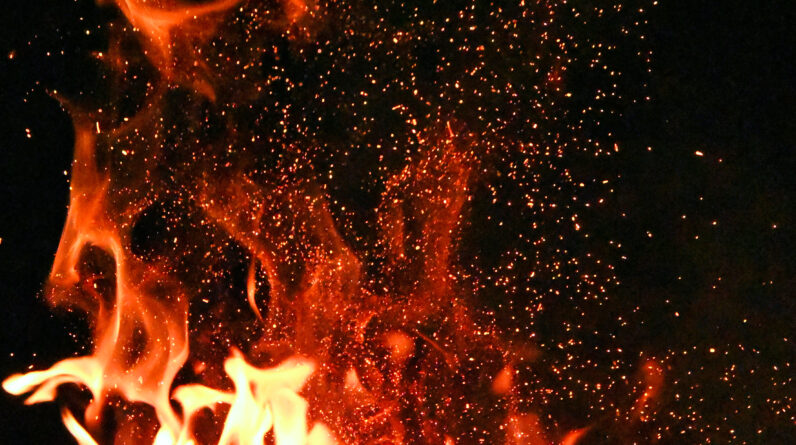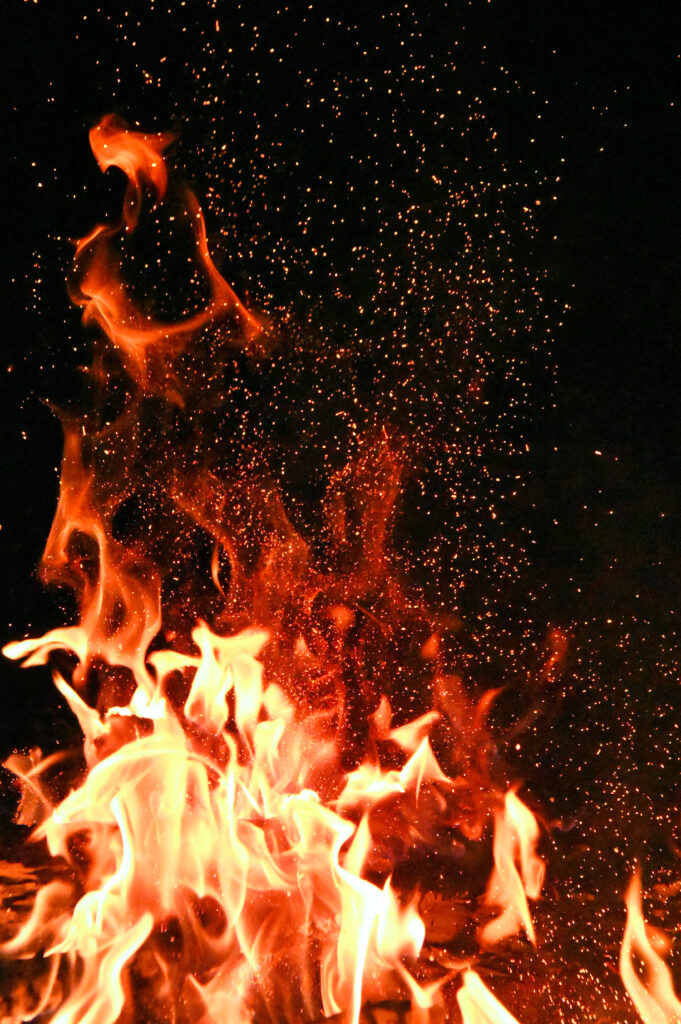
Have you ever opened the freezer, excited to enjoy a frozen treat, only to find that your once delicious-looking food is covered in dry, gray patches? Freezer burn can be a frustrating and wasteful experience, leaving your frozen goods unappetizing and potentially unpalatable. But fear not, there are simple steps you can take to prevent freezer burn and ensure that your frozen food stays fresh and delicious for longer periods of time. In this article, we will explore some practical tips and tricks that will help you outsmart freezer burn and keep your frozen food in its best condition. So, let’s dive in and discover how to protect your frozen goods from the dreaded freezer burn!

Understanding Freezer Burn
Freezer burn is a common issue that occurs when frozen food becomes dehydrated and exposed to air. It appears as white or grayish-brown patches on the surface of the food and can result in a change in texture and taste. Not only does freezer burn affect the quality of your frozen food, but it also leads to food waste. Understanding the causes and effects of freezer burn is essential in preventing it.
Causes of Freezer Burn
Freezer burn is primarily caused by air exposure. When food is not properly packaged or sealed, air can enter the packaging and cause moisture to evaporate from the food. This loss of moisture leads to the formation of ice crystals and the subsequent dehydration of the food. Additionally, temperature fluctuations within the freezer can contribute to freezer burn. Repeated thawing and refreezing can also increase the likelihood of freezer burn.

Effects of Freezer Burn
Freezer burn affects the quality of frozen food in various ways. Firstly, it can lead to a change in taste by creating a dry and stale flavor. The texture of the food can also be negatively impacted, resulting in a tough and unappetizing consistency. Freezer burn can cause discoloration of the food, making it less visually appealing. Moreover, when food is affected by freezer burn, it loses its nutritional value, further diminishing its overall quality.
Proper Packaging Techniques
Using proper packaging techniques is crucial in preventing freezer burn and preserving the quality of your frozen food.
Use Airtight Containers
When storing food in the freezer, opt for airtight containers that seal completely. This will prevent air from entering the packaging and minimize the risk of freezer burn. Containers made of glass or heavy-duty plastic are excellent choices as they provide a secure seal.
Wrap with Quality Materials
For food items that need to be wrapped, such as meats and vegetables, it is essential to use high-quality materials. Wrap the food tightly with freezer paper, aluminum foil, or plastic wrap, ensuring there are no gaps or openings. This will create a protective barrier against air and moisture, preventing freezer burn from occurring.
Remove Excess Air
When using plastic bags for storage, it is crucial to remove as much excess air as possible before sealing. Air-filled bags create an environment that promotes freezer burn. To remove excess air, consider using a vacuum sealer or manually squeeze out the air before sealing the bag.
Avoid Overlapping
Avoid overlapping food items in the freezer. Overlapping can create air pockets and increase the chances of freezer burn. Optimize your freezer space by arranging the food in a single layer, allowing for proper airflow and efficient freezing.

Temperature Control
Proper temperature control in your freezer is key to preventing freezer burn. Follow these tips to ensure your freezer temperature is properly set and maintained.
Set the Freezer Temperature Correctly
It is essential to set your freezer at the right temperature to prevent freezer burn. Generally, a temperature between 0°F and -10°F (-18°C to -23°C) is recommended for optimal food preservation. Use a freezer thermometer to accurately determine and adjust the temperature as needed.
Regularly Check and Maintain Temperature
Regularly monitor the temperature of your freezer to ensure it remains consistent. Fluctuations in temperature can contribute to freezer burn. If you notice any irregularities, such as a temperature increase, investigate and address any issues promptly. Additionally, defrost your freezer regularly to prevent ice buildup, which can affect its cooling efficiency.
Organizing Your Freezer
Proper organization is crucial to maintaining the quality of your frozen food, preventing freezer burn, and ensuring efficient use of space.
First in, First Out (FIFO) Method
Adopting the First in, First out (FIFO) method when organizing your freezer helps to prevent food from sitting in the freezer for prolonged periods and risking freezer burn. When stocking your freezer, place newer items at the back and older items at the front. This way, you will consume the older items first and minimize the chances of food going to waste.
Keep Freezer Clean and Organized
Regularly clean your freezer to remove any spilled food or ice buildup. A clean freezer not only improves hygiene but also ensures proper airflow, thus reducing the risk of freezer burn. Group similar items together and label them for easy identification. This practice will help maintain order and make it easier to navigate through your frozen food inventory.
Avoid Overcrowding the Freezer
Avoid overcrowding your freezer as it can restrict airflow, resulting in uneven cooling and increased chances of freezer burn. Allow ample space between food items to facilitate proper circulation of cold air. If your freezer is consistently full, consider investing in additional freezer space or reducing the number of items stored.
Optimal Food Preparation
Properly preparing food before freezing can greatly reduce the risk of freezer burn and maintain the quality of your frozen food.
Blanching Before Freezing
Blanching certain vegetables, such as broccoli or carrots, before freezing can help preserve their texture and prevent loss of nutrients. Blanching involves briefly boiling the vegetables and then rapidly cooling them in ice water. This process helps to retain color, flavor, and texture, reducing the chances of freezer burn.
Avoid Pre-Freezing Liquid-Rich Foods
Foods high in liquid content, such as soups or sauces, are prone to freezer burn. Instead of freezing them in their liquid form, consider pre-freezing them in shallow containers or ice cube trays. Once the portions are frozen, transfer them to airtight containers or freezer bags for long-term storage.
Divide Larger Portions Into Smaller Ones
When freezing larger portions of food, such as roasts or casseroles, it is advisable to divide them into smaller portions. By doing so, you reduce the surface area exposed to air and promote faster and more even freezing. Smaller portions also allow for easier reheating and minimize the risk of wasting food.
Cool Foods Before Freezing
Ensure that foods are completely cooled before placing them in the freezer. Hot or warm foods increase the temperature within the freezer, causing unnecessary fluctuations. Allow the food to cool to room temperature before sealing and freezing it.
Choose Suitable Frozen Foods
Choosing the right type of frozen foods can significantly reduce the likelihood of freezer burn.
Buy Freezer-Burn-Resistant Foods
Some foods have a natural resistance to freezer burn, making them a suitable choice for long-term freezing. These include foods with lower water content, such as nuts or bread. When purchasing frozen foods, opt for those that have been sealed in airtight packaging for added protection against freezer burn.
Know Which Foods Do Not Freeze Well
Not all foods are suitable for freezing, and attempting to freeze them can lead to freezer burn. Foods with high water content, like lettuce or cucumbers, tend to become mushy and lose their texture when frozen. Refer to reliable sources or consult food preservation guides to determine which foods are best enjoyed fresh.
Consider Vacuum-Sealed Options
Vacuum-sealed packaging provides optimal protection against freezer burn. Vacuum-sealed frozen foods are tightly sealed, removing excess air and preventing moisture loss. Consider investing in vacuum-sealed options for certain foods to extend their freezer life and maintain their quality.
Avoid Frequent Temperature Fluctuations
Reducing temperature fluctuations in your freezer is essential in preventing freezer burn.
Minimize Freezer Door Openings
Frequent door openings introduce warm air into the freezer, disrupting the ideal temperature and increasing the risk of freezer burn. Minimize the frequency and duration of door openings by planning ahead and retrieving all necessary items in one go. Additionally, ensure the freezer door is properly sealed, and check the gaskets regularly for any signs of wear or damage.
Do Not Store Hot or Warm Items Directly in the Freezer
Storing hot or warm items directly in the freezer can lead to temperature fluctuations, rapidly raising the internal temperature. Allow hot or warm foods to cool to room temperature before transferring them to the freezer.
Proper Thawing Techniques
Thawing frozen food properly is crucial in preserving its quality and minimizing the risk of freezer burn.
Thaw in the Refrigerator
The safest and most effective way to thaw frozen food is in the refrigerator. Place the frozen item on a plate or in a container to catch any potential drips and allow it to thaw slowly in the fridge. Thawing in the refrigerator ensures a consistent temperature, preventing any unnecessary temperature fluctuations.
Use Cold Water Thawing Method
If you need to thaw food quickly, the cold water thawing method can be used. Place the frozen food in a leak-proof plastic bag and submerge it in cold water. Change the water every 30 minutes to maintain a consistent and safe temperature. Avoid using warm or hot water, as this can promote bacterial growth.
Avoid Leaving Food at Room Temperature for Long
Leaving frozen food at room temperature for an extended period can lead to partial thawing and promote the growth of bacteria. It is crucial to thaw food promptly using proper methods to minimize the risk of foodborne illnesses and freezer burn.
Regularly Check and Rotate Frozen Food
Regularly checking and rotating your frozen food inventory can help prevent freezer burn and ensure that you consume food before it reaches its expiration date.
Monitor Expiration Dates
Regularly check the expiration dates of your frozen food and ensure that older items are consumed first. Keeping a rotation schedule or labeling packages with dates can help you keep track of items that need to be used soon.
Frequently Rotate Frozen Items
To prevent freezer burn, regularly rotate your frozen items by moving older items to the front and newer items to the back. This practice ensures that all items in the freezer are used before they reach their expiration date and encourages the FIFO method.
Other Preventive Measures
Consider implementing additional preventive measures to further mitigate the risk of freezer burn.
Utilize Freezer Burn Indicators
Some food packaging comes with freezer burn indicators, such as labels that change color when exposed to air or freezer burn. Utilize these indicators to identify potentially affected food items and prioritize their consumption.
Consider Investing in a Quality Freezer
Investing in a quality freezer is a long-term solution to help prevent freezer burn. High-quality freezers are designed with advanced temperature control systems and efficient airflow, reducing the risk of temperature fluctuations and promoting even freezing. Consider purchasing a freezer with a frost-free feature to minimize ice buildup and ensure optimal freezing conditions.
By following these comprehensive guidelines for preventing freezer burn, you can enjoy your frozen food with confidence, knowing that it will retain its quality and nutritional value. Take the time to properly package, organize, and thaw your frozen food to ensure that it remains fresh and free from freezer burn. With proper techniques and a little extra care, you can minimize food waste and enjoy delicious frozen meals for an extended period.
